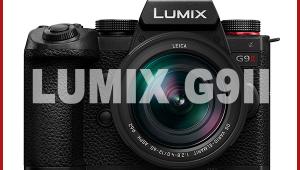publicar gracias a usted mucho, muy buen artículo que lo necesito Gracias por el post. Agradezco la información sobre los comentarios del blog y seguramente va a empezar a buscar a las personas que están usando programas automatizados para hacer publicaciones en el blog de comentarios. http://www.kizi2s.com
Samsung NX300 Mirrorless Camera Review
The NX300 follows the company’s NX210 and updates many features. Its new WLAN system, for example, now supports 2.4GHz and 5GHz systems for better data transfer. (Note: 5GHz systems eliminate interference better than the older 2.4GHz standard.) The free Wi-Fi connection can be used with remote control software on Android or Apple iOS smartphones, for auto backup on the PC, and for various mobile link functions, like sharing images by e-mail or in social networks.





Another change is that now the maximum ISO speed is raised from ISO 12,800 to ISO 25,600. The LCD screen on the back of the NX300 is larger (3.3” instead of 3”) with a higher resolution (NX300: 768,000 RGB dots; NX210: 614,000). The swivel monitor can be flipped upward (90 degrees) and downward (45 degrees) for better image and video control. It is an AMOLED system with a very bright and brilliant presentation of images and menus. It’s also a touchscreen system that allows the user to set up all parameters directly with a tap of the finger. The active focus point can also be defined by a finger touch on the desired area on the screen.
The NX300 offers a mode dial and a setup dial on the top for fast and efficient image control. The mode dial offers standard exposure modes like P, A, S, and M, a “Smart” mode to use scene programs, plus additional modes like panorama shooting or portrait shots with optimized settings for skin reproduction (with an added blur effect for softer skin tones). The mode dial has a special “Wi-Fi” mode which allows for direct access to all Wi-Fi functions. A “Direct link” button on the top allows for direct access to a predefined WLAN connection, such as an AutoShare function.
The camera offers Samsung’s iFunction technology that allows the user to change image parameters like ISO speed settings with the lens ring. The iFunction button on the left-hand side of the lens is used to toggle through the current available settings (the function is context sensitive and depends on the current active image mode).
The NX300 is designed like an analog viewfinder camera but has no optical or electronic viewfinder. The robust body has a high-class finish. The quality of all function elements is also on a high-quality level. The camera body is available in white or black.
The camera is able to record Full HD video with up to 60 frames per second. Video clips are saved as MOV files with H.264 compression.

Image Quality
Color: The Samsung NX300 showed excellent performance in the color tests. It reproduced the test chart with a nearly perfect saturation (99.41 percent), which means it has slightly lower saturation than most competitors. Skin tones are reproduced nearly perfectly with their given values. Compared to our portrait test shots with Canon cameras, for example, we noticed a somewhat paler look with a near “porcelain” complexion. The colors in the standard test box look natural and the automatic white balance system did a good job under all lighting conditions. Only the background of the portrait shot has a slight bluish/cool touch.

Sharpness: The resolution results at ISO 100 are very good, although sharpness decreases considerably in the highest ISO settings because of very intense anti-noise filtering (see “Noise” tests). The camera reproduced the test chart with 3292 lines of 3648 lines (nominal sensor resolution) per picture height. The sharpness filtering done by the DRIMe IV image processor is noticeable and causes an overshot effect of 18.2 percent. This is a high value but overall the results are quite acceptable. We noticed some contours on contrast lines in the test shots and even some aliasing effects on very fine image structures, like in the hair of the model. Nevertheless the images have a crisp but not over-sharpened look.
Noise: The camera showed some very good results in lower ISO speed settings. Up to ISO 1600 the luminance noise factor is on the same level as SLR cameras with APS-C-sized chips. However, the camera uses extreme anti-noise filtering in higher ISO speed settings. This is the reason why the luminance noise keeps on a very low leveleven in images taken with higherISO speed settings, staying nearly on the same level in images taken with ISO 100 to ISO 400. But the image pays a very high price for this “low level luminance noise factor filtering.” The anti-noise filtering is extreme and decreases image details dramatically. Looking at the shot of the Stouffer 4110 chart in ISO 25,600 mode, for example, we could not differentiate any of the gray patterns, which transformed into a gray gradient. Even though the image is filtered and blurred in this extreme way, we noticed clearly visible color noise (color clouds and color smears in homogeneous gray or black areas). The color noise level and sharpness/differentiation of the gray test patterns are acceptable in images taken up to ISO 6400, but the noise artifacts and the blurring effect in the highest ISO settings are quite extreme.

The camera showed a very good performance in the dynamic range tests when shooting with ISO 100 to ISO 800. In higher ISO speed settings dynamic range drops noticeably.
Scorecard
Pro
+ Compact body with a very nice high-class finish
+ Fast burst mode
+ Swivel LCD
+ Very good resolution results
Con
- Missing optical or electronic viewfinder
The Samsung NX300 with a 20-50mm f/3.5-5.6 ED lens has a list price of $749. For more information, visit www.samsung.com.
Lab results and test images by BetterNet, our TIPA-affiliated testing lab. Edited by George Schaub.
- Log in or register to post comments


















































